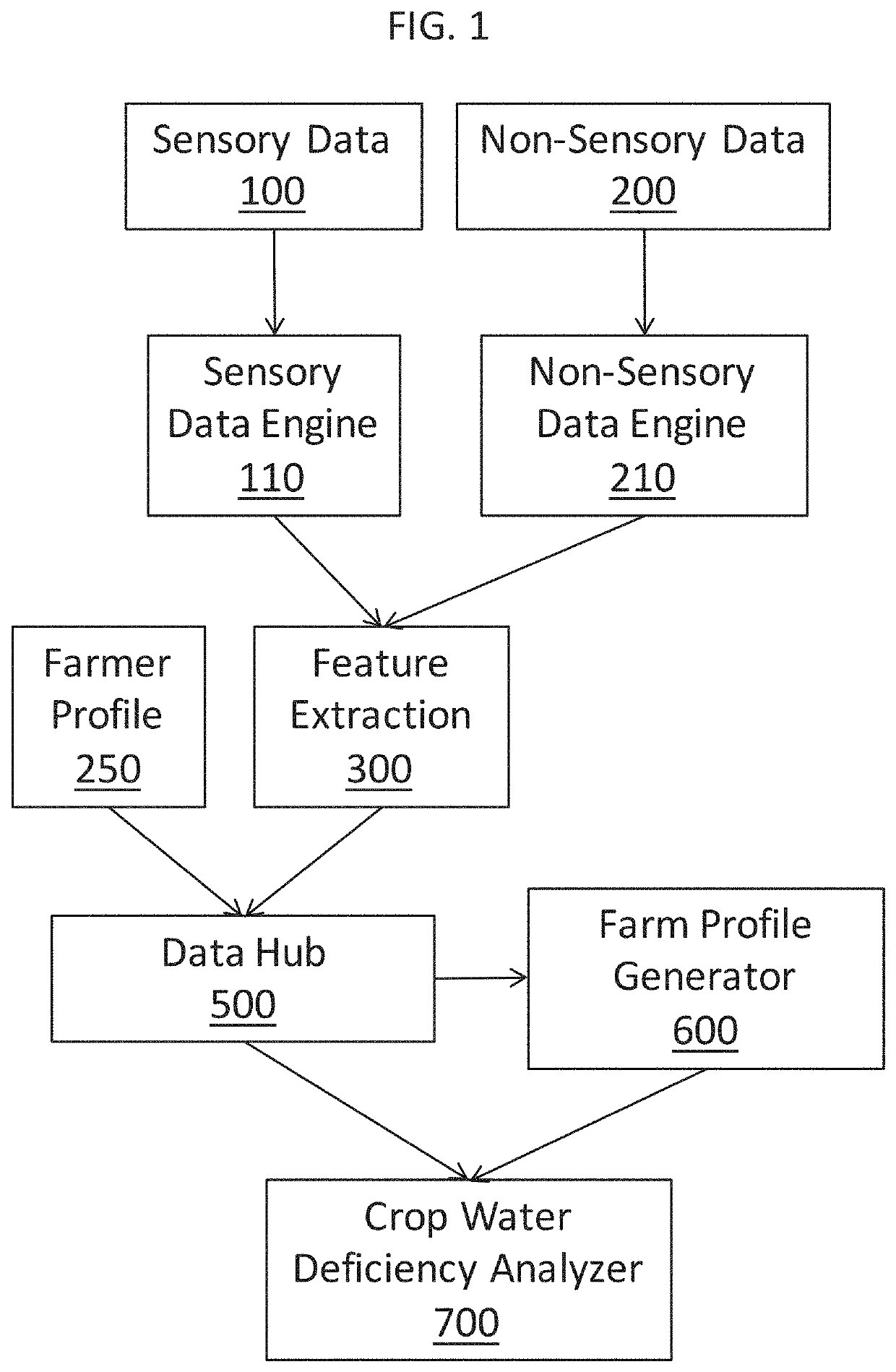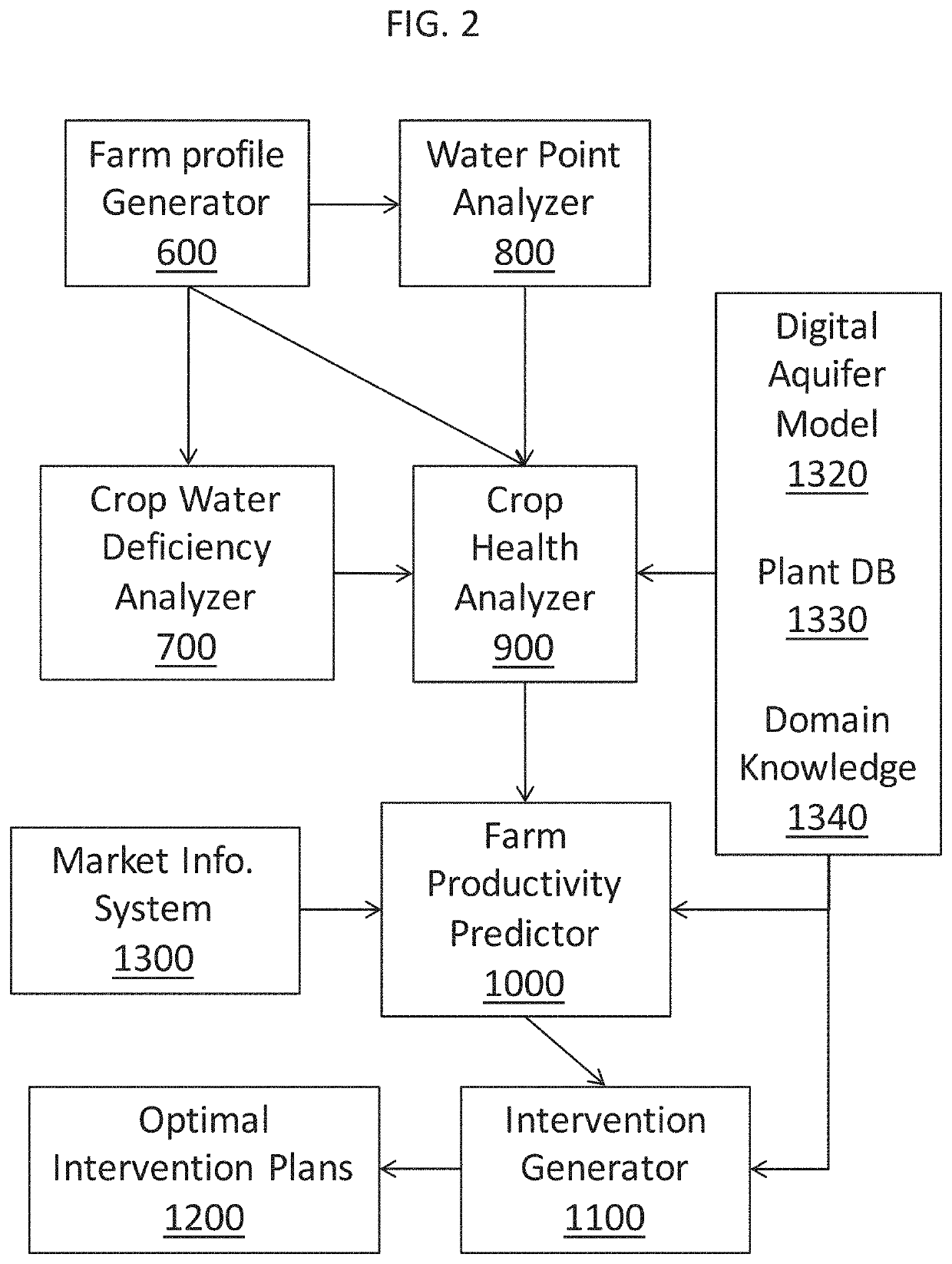Predicting crop productivity via intervention planning on small-scale farms
a technology for small-scale farms and crop productivity, applied in the field of methods and systems for monitoring and managing crops, can solve the problems of low productivity among developing economies, farmer's weather, pest and market access constraints, and the inability to use remote sensing to accurately predict crop productivity, so as to reduce the overall operating cost of small-scale farming water management and efficiency farm intervention strategies. , to achieve the effect of intelligently determining crop productivity and reducing the overall operating cost of small-scale farming
- Summary
- Abstract
- Description
- Claims
- Application Information
AI Technical Summary
Benefits of technology
Problems solved by technology
Method used
Image
Examples
example 1
[0086]Consider two small scale farms at a given location X and Y growing tomatoes in a one-acre plot and instrumented with soil moisture sensors located at positions shown below and water level sensor located at an irrigation tank.
[0087]For both areas, the following parameters may vary: weather conditions, soil type, water consumption at the farm, and farmer's profile. Moreover, we assume that the following parameters are similar: type of crop variety (say both farms are using Tilka F1 tomato variety), type of irrigation system and water tank size.
[0088]Due to the variation of values for the dynamic parameters (i.e., soil type and weather), the crop water uptake patterns indicated by the soil moisture readings will be different in both locations hence the Crop Health Index H. This is because that H depends on the value of the Crop Water Deficit D that depends on the Crop Water needs estimated using ETo which is a function of weather variables. In addition, given the farmer behaviour...
example 2
[0090]Soil moisture signals collected from bush beans grown in the same container, with the same soil type, under different watering conditions reflect distinct fluctuations that link to the water uptake patterns and plant health. The micro and macro patterns embedded in the signals reflect the level of water stress being experienced by the beans. A graph of water content over time from three sensors monitoring the growth of the beans is shown in FIG. 4.
PUM
 Login to View More
Login to View More Abstract
Description
Claims
Application Information
 Login to View More
Login to View More - R&D
- Intellectual Property
- Life Sciences
- Materials
- Tech Scout
- Unparalleled Data Quality
- Higher Quality Content
- 60% Fewer Hallucinations
Browse by: Latest US Patents, China's latest patents, Technical Efficacy Thesaurus, Application Domain, Technology Topic, Popular Technical Reports.
© 2025 PatSnap. All rights reserved.Legal|Privacy policy|Modern Slavery Act Transparency Statement|Sitemap|About US| Contact US: help@patsnap.com



